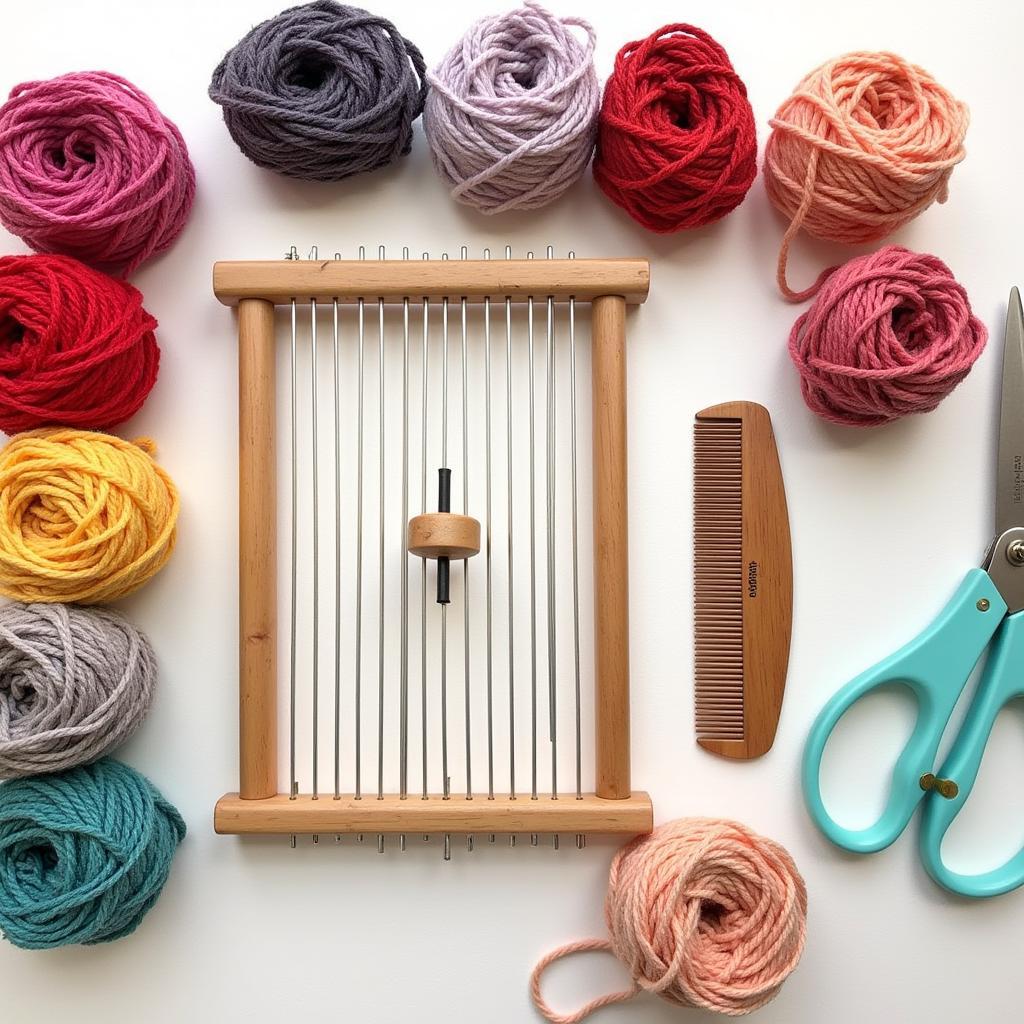Exploring the Creative Realm of Loom Art
Loom Art, a captivating fusion of traditional weaving techniques and modern artistic expression, is experiencing a vibrant resurgence in the digital age. From intricate tapestries to vibrant wall hangings, loom art offers endless possibilities for artists and art enthusiasts to unleash their creativity.
 Introduction to Loom Art
Introduction to Loom Art
Understanding Loom Art: A Rich History and Modern Evolution
The origins of loom art can be traced back centuries, with evidence of weaving found in ancient civilizations around the world. Traditional looms, often crafted from wood, were used to interlace threads vertically and horizontally, forming beautiful fabrics and decorative textiles. Today, while the fundamental principles of weaving remain, loom art has evolved to encompass diverse materials, techniques, and artistic visions.
Tools and Materials: What You Need to Get Started with Loom Art
Creating your own loom art is an accessible and rewarding experience. Here’s a list of essential tools and materials to embark on your weaving journey:
- Loom: Various types of looms are available, from small handheld frames to larger standing models. Choose a loom size that suits your project and skill level.
- Yarn: Explore a world of colors, textures, and fiber types to find the perfect yarn for your creation. Consider using natural fibers like cotton or wool, or experiment with synthetic blends for unique effects.
- Shuttle: This tool helps efficiently carry the yarn across the loom’s warp threads.
- Comb: Use a loom comb to pack the weft threads tightly together, ensuring a neat and even weave.
- Scissors: Sharp scissors are essential for trimming yarn and finishing your woven pieces.
 Essential Loom Art Supplies
Essential Loom Art Supplies
Weaving Techniques: From Basic to Advanced
Loom art encompasses a wide range of weaving techniques, each producing distinctive patterns and textures. Some fundamental techniques include:
- Plain Weave: This basic technique involves passing the weft thread over and under each warp thread, creating a simple yet elegant pattern.
- Twill Weave: Twill weave produces diagonal lines by passing the weft thread over one or more warp threads and then under two or more warp threads.
- Tapestry Weave: This technique allows for intricate designs and color blending by weaving different colored weft threads across a specific section of the warp.
As you gain experience, you can explore more advanced techniques like basket weave, soumak, and rya knots to add depth and complexity to your loom art.
Finding Inspiration: Where to Discover Loom Art Ideas
Inspiration for loom art is everywhere! Here are a few places to spark your creativity:
- Nature: The natural world is a boundless source of inspiration, from the intricate patterns of leaves to the vibrant colors of flowers. Consider visiting art in the gardens fort bragg to witness firsthand the harmonious blend of art and nature.
- Art History: Explore the rich tapestry of art history, from ancient weaving traditions to modern textile art. Museums, galleries, and online resources offer a wealth of inspiration.
- Everyday Objects: Find beauty in the mundane by drawing inspiration from everyday objects like textiles, ceramics, and architecture.
Loom Art: Beyond Wall Hangings
While wall hangings are a popular application of loom art, the creative possibilities extend far beyond. Consider these innovative ways to incorporate loom art into your life:
- Fashion Accessories: Weave unique scarves, belts, or even jewelry using small looms and delicate yarns.
- Home Decor: Create textured rugs, colorful coasters, or eye-catching pillows to add a touch of handmade charm to your living spaces.
- Gifts: Personalized loom art pieces make thoughtful and heartfelt gifts for special occasions.
Conclusion: Embrace the Art of Weaving with Loom Art
Loom art offers a captivating blend of creativity, tradition, and self-expression. Whether you’re drawn to the meditative process of weaving or the stunning visual impact of finished pieces, exploring loom art is a rewarding journey of artistic discovery. From simple to intricate designs, the possibilities are limitless. So gather your materials, choose your loom, and embark on your own loom art adventure.
Frequently Asked Questions about Loom Art
1. What is the best type of loom for beginners?
A rigid heddle loom or a frame loom is a great starting point for beginners, offering ease of use and versatility for various projects.
2. Where can I find high-quality yarn for loom weaving?
Local yarn stores, online retailers, and even thrift stores can be treasure troves for unique and high-quality yarns.
3. Can I wash my loom art pieces?
The care instructions for loom art depend on the type of yarn used. Always check the yarn label for washing and drying recommendations.
4. What are some tips for avoiding tension problems while weaving?
Maintaining even tension throughout your weaving is crucial. Practice makes perfect, but using a consistent weaving rhythm and gently adjusting the tension as needed can help.
5. Are there online resources for learning loom art techniques?
Yes! Numerous online platforms offer tutorials, workshops, and communities dedicated to loom art. YouTube is an excellent resource for visual learners.
Need help with your creative journey? Contact us at Phone: 02462573573, Email: danteum@gmail.com, or visit us at Savico Megamall, 7-9 Đ. Nguyễn Văn Linh, Gia Thụy, Long Biên, Hà Nội 10000, Việt Nam. Our dedicated customer support team is available 24/7 to assist you.



